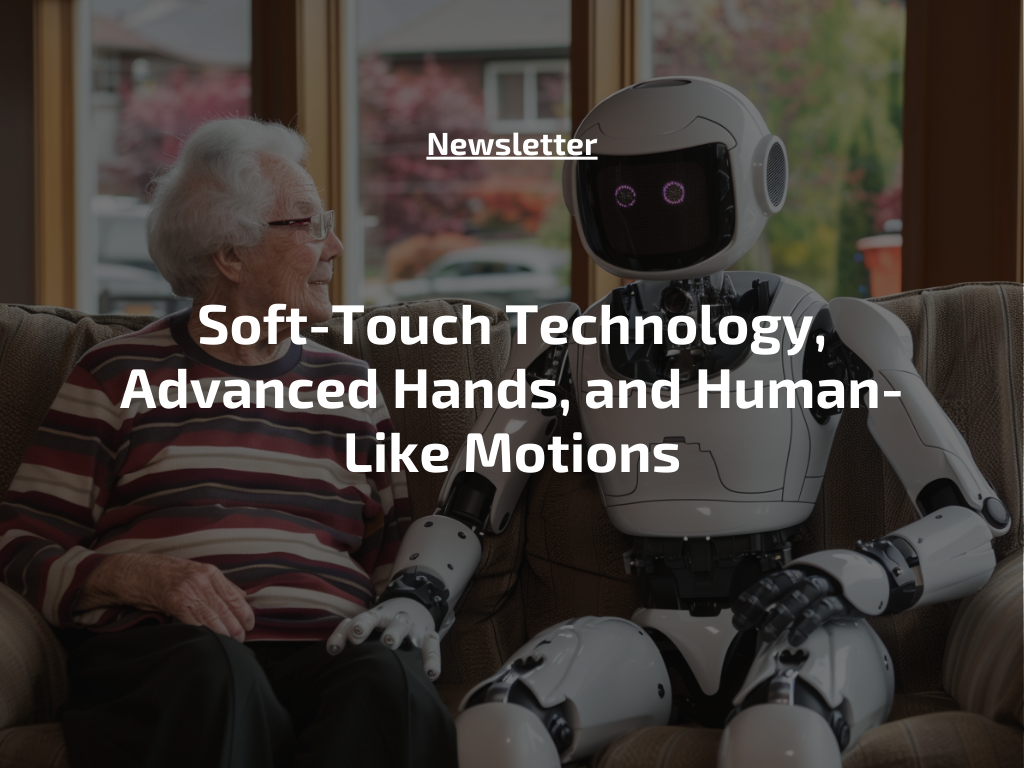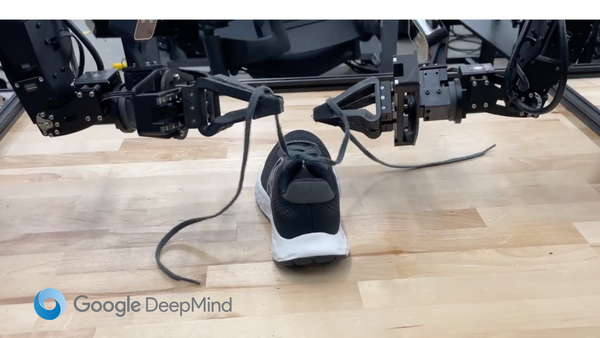Soft-Touch Technology, Advanced Hands, and Human-Like Motions
Learn about soft-touch technology enabling robots to give hugs, advanced robotic hands designed for intricate tasks, and a new data-driven model is set to revolutionize how humanoid robots move

A lot is going on in the humanoid robot market this week! From soft-touch technology that enables robots to give hugs to advanced robotic hands designed for intricate tasks, the innovations are groundbreaking.
Plus, a new data-driven model is set to revolutionize how humanoid robots move and interact, bringing us closer to a future where robots seamlessly integrate into our daily lives.
Let's dive in!
Soft-Touch Technology Enables Hugging Robots
Discover Magazine reports that soft-touch technology innovations are changing how humanoid robots interact with humans, allowing for more nuanced and emotionally intelligent connections.
Researchers and companies are developing robots that can perform tasks with a gentle touch, ranging from everyday assistance to physical therapy and agricultural applications.
These advancements showcase a future where robots can mimic human touch and emotional interactions more closely.

WHAT YOU NEED TO KNOW
- Punyo Robot: Equipped with compliant materials and tactile sensors, Punyo can manipulate objects with varying degrees of pressure, making it ideal for assisting with everyday tasks. Its soft limbs and high-precision cameras allow it to apply the right amount of force based on the object it handles.
- HuggieBot 2.0: Designed for emotional interaction, HuggieBot 2.0 can give warm, affectionate hugs by adjusting its chest and arm pressure based on the person’s size. This capability opens new possibilities in physical therapy, training, and rehabilitation.
- SORI and Soft Actuators: EPFL’s SORI improves tactile perception with motor-driven origami joints and silicone membranes, while AMOLF's soft actuators can feel objects without built-in sensors. These technologies enhance robot capabilities in delicate tasks such as surgery and agriculture.
WHY YOU SHOULD CARE
Understanding these developments in soft-touch humanoid robots is essential for several reasons:
- Enhanced Human-Robot Interaction: These innovations allow robots to interact with humans in more natural and emotionally intelligent ways, improving user experiences in various settings, from homes to healthcare facilities.
- Broader Applications: The ability of robots to perform delicate tasks with a soft touch expands their use cases significantly, including roles in physical therapy, surgery, and agriculture, which require precision and care.
- Technological Advancements: The progress in soft-touch technologies highlights the rapid evolution of robotics, showcasing how robots can become more versatile and integrated into everyday life. This can lead to increased adoption and new opportunities for businesses and industries.
A Startup Introduces an Advanced Robotic Hand for Object Manipulation
Robot Era, a Beijing-based humanoid robot startup, has introduced the XHand, a highly dexterous robotic hand designed for various everyday and industrial tasks.
The XHand was demonstrated performing a range of activities, showcasing its advanced capabilities.
This innovation is part of the company’s broader effort to enhance humanoid robotics, which is supported by its open-sourced training software, Humanoid-Gym.
WHAT YOU NEED TO KNOW
- Advanced Robotic Hand: The XHand, integrated into Robot Era’s XBot-L, features 12 active degrees of freedom and built-in tactile sensors, allowing it to perform intricate tasks with high precision and control. Demonstrations included packing bags, tending plants, and gently stroking a cat.
- Versatile Applications: XHand is designed for both industrial and domestic use. It is capable of handling material sorting, picking, assembling in factories, and performing household chores like gardening and pet sitting.
- Open-Source Training Software: Robot Era has open-sourced its humanoid robot training software, Humanoid-Gym, which utilizes Nvidia’s Isaac Gym to train robots in locomotion skills. This initiative aims to improve the accessibility of humanoid robot technology and accelerate its market adoption.
WHY YOU SHOULD CARE
The development of Robot Era's XHand represents a significant advancement in humanoid robotics for several reasons:
- Enhanced Dexterity and Precision: XHand’s advanced design, with multiple degrees of freedom and tactile sensors, sets a new standard for robotic hand functionality, enabling robots to perform complex tasks with human-like precision and care.
- Broader Application Scope: XHand's versatility in industrial and domestic settings highlights its potential to revolutionize various sectors by automating intricate and repetitive tasks, thereby increasing efficiency and reducing human labor.
- Accelerated Innovation and Adoption: By open-sourcing their training software, Robot Era is developing a collaborative environment, leading to faster innovation and wider adoption of humanoid robots. This approach democratizes access to cutting-edge technology and accelerates the development and deployment of practical humanoid robots in the market.
A New Data-Driven Model Enhances Human-Like Motions for Humanoid Robots
Researchers at the Max Planck Institute for Intelligent Systems and ETH Zurich have developed WANDR, a groundbreaking model that generates natural human motions for virtual avatars.
This model, set to be presented at the CVPR 2024 conference, leverages various data sources to produce realistic 3D movements.
It enhances virtual human interactions across multiple applications, including the metaverse, digital entertainment, and robotics.
WHAT YOU NEED TO KNOW
- Innovative Motion Generation: WANDR is a new model that generates natural human motions for virtual avatars by unifying different data sources, allowing for realistic 3D movements in digital environments.
- Advanced Learning Techniques: The model avoids traditional reinforcement learning, instead using data-driven methods to learn general navigation skills and goal-oriented actions, enhancing its adaptability and realism.
- Potential Applications in Robotics: WANDR’s ability to produce realistic human motions can be applied to humanoid robots, enabling them to perform tasks with human-like fluidity and adaptability, which is essential for interactions in dynamic environments.
WHY YOU SHOULD CARE
Understanding the development of WANDR is crucial for several reasons:
- Enhanced Robotic Interactions: WANDR’s motion generation capabilities can significantly improve humanoid robots, allowing them to move and perform tasks more naturally, which is vital for applications in manufacturing, healthcare, and service industries.
- Technological Advancement: The model’s innovative approach to learning and motion generation sets a new standard in the field, demonstrating the potential for more sophisticated and adaptable humanoid robots that can seamlessly integrate into human environments.
- Broad Impact on Multiple Industries: With applications in robotics, WANDR’s advancements can drive significant progress across various sectors, influencing how humanoid robots are developed and utilized, ultimately enhancing their effectiveness and acceptance in daily life and work environments.



